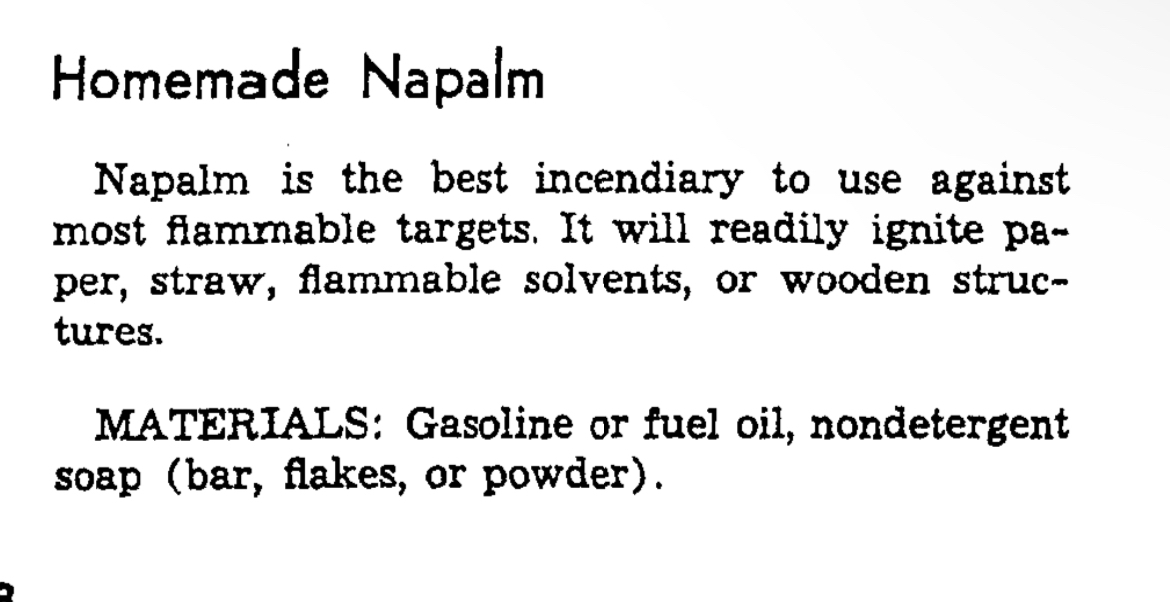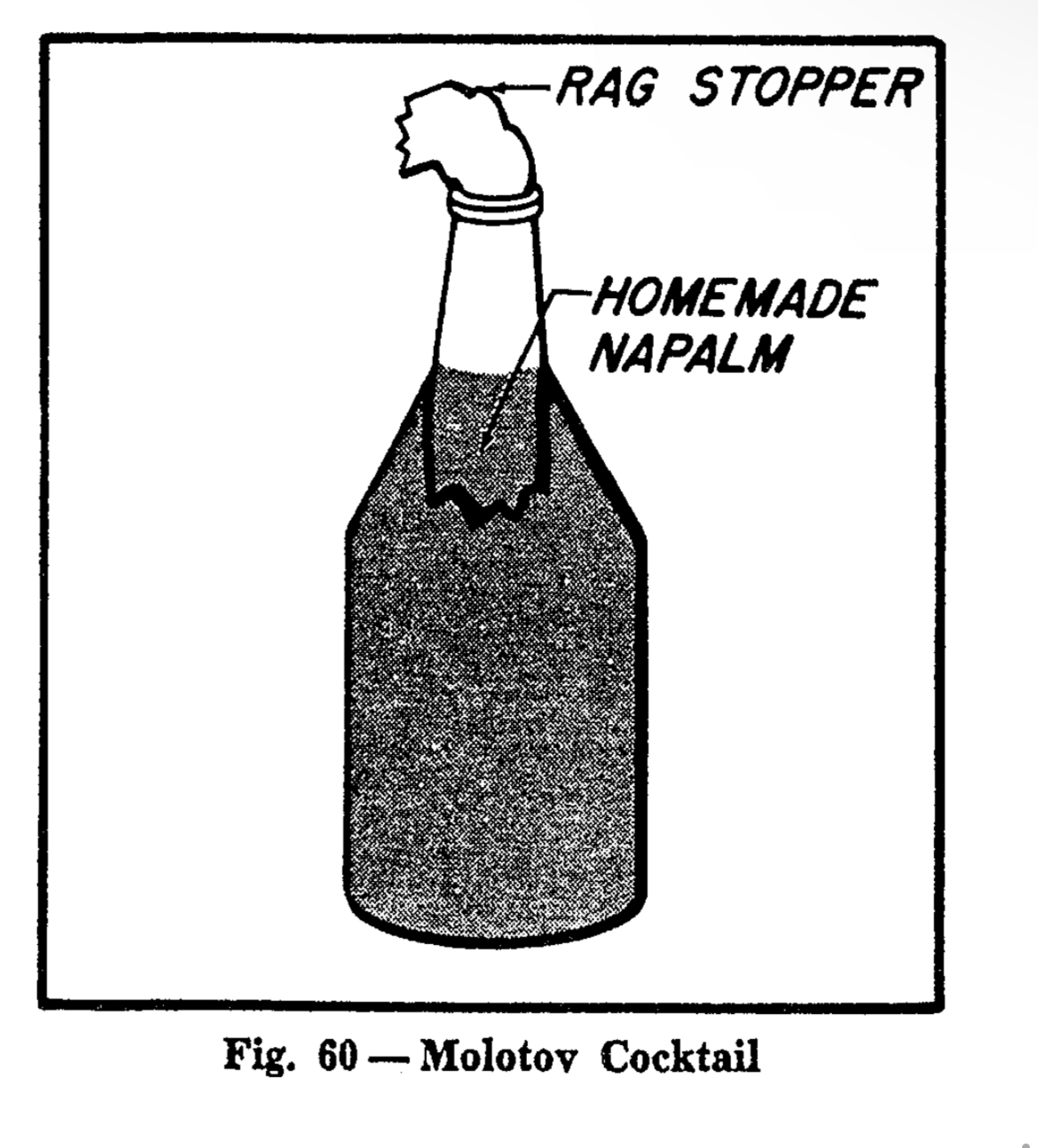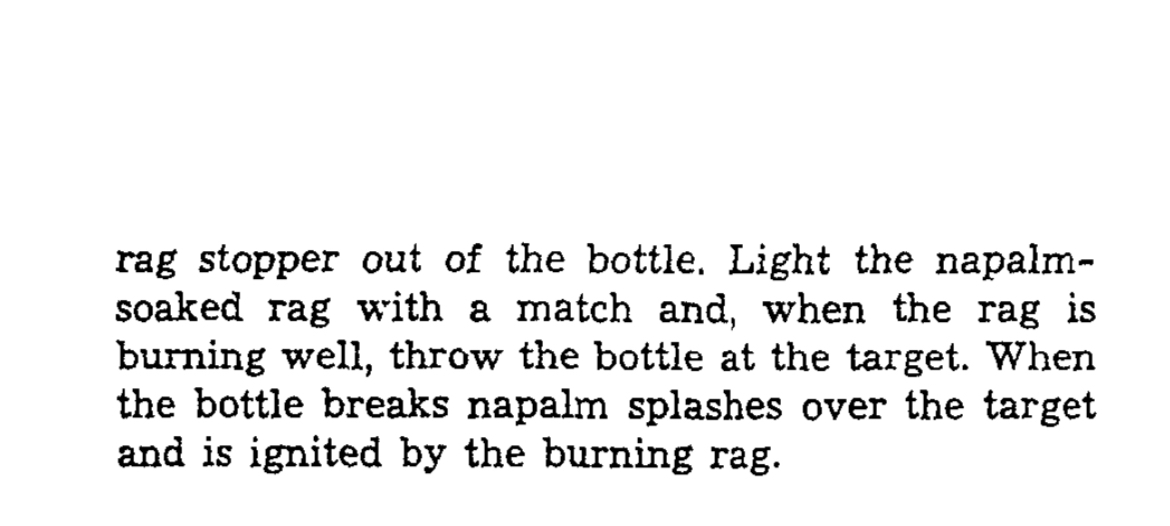Straight from the CIA sabotage manual (dm me for links)





Napalm is the best incendiary to use against most flammable targets. It will readily ignite pa-per, straw, flammable solvents, or wooden structures. MATERIALS: Gasoline or fuel oil, nondetergent soap (bar, flakes, or powder).
PREPARATION:
- Use about equal parts of soap and oil. If bar soap is used, slice it into small chips. If both gasoline and fuel oil are available, use both in equal parts.
- Heat the fuel in an open container, preferably one with a handle, out of doors. Try to avoid creating sparks or having a high open flame, but if the fuel should catch on fire extinguish it by placing a board or piece of tin over the container.
- Gasoline, in particular, will begin to bubble very quickly. When it does, remove from the fire and gradually add the soap, stirring continuously, until the soap is completely dissolved and a thin pasty liquid results. If necessary return the mixture to the fire, but as a safety measure it is best not to stir while the container is on the fire.
- When the desired consistency is reached allow the mixture to cool.
- Napalm also can be mixed by a cold method, although it may take hours to thicken. This should be done by alternately adding very small amounts of soap chips or powder and gasoline or fuel oil and stirring until the mixture reaches a thin jellylike consistency. It is best to start with about a cupful of soap, add part of a cup of solvent and stir that until smooth before gradually adding the remaining ingredients. Continuous stirring is not required. In fact, it is advisable just to let the mixture and the mixer rest from time to time and give the soap a chance to dissolve.
Napalm will keep well if stored in a tightly sealed container. It can be ignited with a match or any of the first fire mixtures described previously.
The ignition packet should be placed adjacent to or just over the napalm, otherwise the petroleum may soak it and prevent its burning. When napalm is used on easily ignitible materials (such as loosely piled paper, rags, or hay) it should be spread out so it will start a large area burning at once. Tightly baled paper or rags should be loosened first, because they do not burn well. If used directly against wooden structures or other large articles which are difficult to ignite, the napalm should be concentrated in sufficient quantity to provide a hot, long lasting blaze. If about a half dozen pieces of charcoal are put into and around the napalm the heat output is considerably increased.
Napalm makes an excellent “Molotov cocktail.” Just fill any glass bottle with a small neck with the napalm and cram a twisted strip of cloth into the mouth of the bottle as a stopper. See Figure 60. When ready to use, pull about 4 to 6 inches of the rag stopper out of the bottle. Light the napalm-soaked rag with a match and, when the rag is burning well, throw the bottle at the target. When the bottle breaks napalm splashes over the target and is ignited by the burning rag.


Just to note, using a rag as a stopper is not recommended. Using a bottle with a standard stopper, screw cap or swing over latching style cap is ideal. A rag isn’t going to be great for keeping the contents inside the bottle, regardless of how it’s twisted or stuffed into the neck and mouth of the bottle. A more practical method is to have filled bottles, capped and sealed as well as possible, with a dry rag tied around the neck. When ready to deploy, take the bottle, dip/spray/soak the rag with accelerant, light, then throw.
The last thing anyone wants is to throw a napalm Molotov and end up splattering themselves and everyone around them, and between them and the target, with burning napalm…